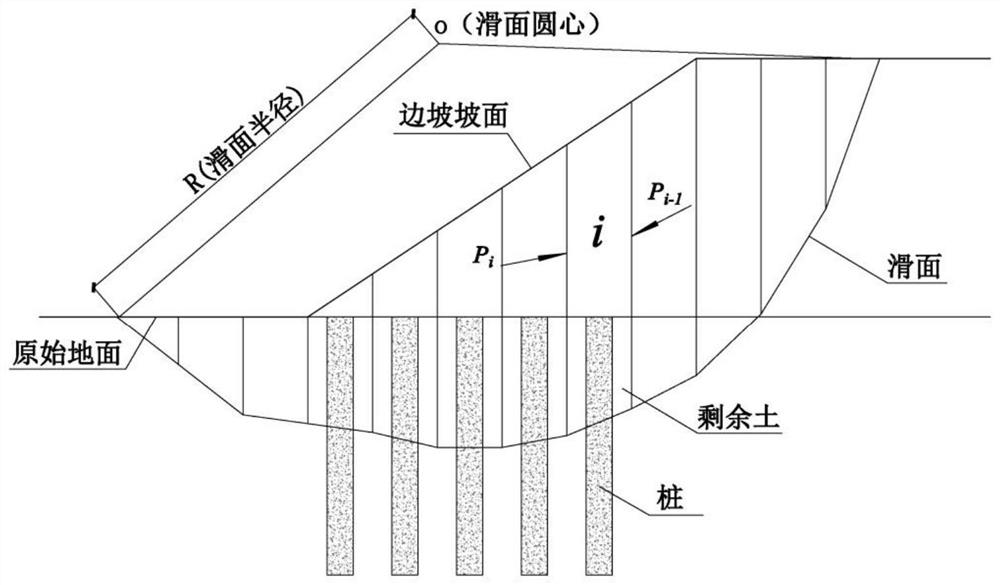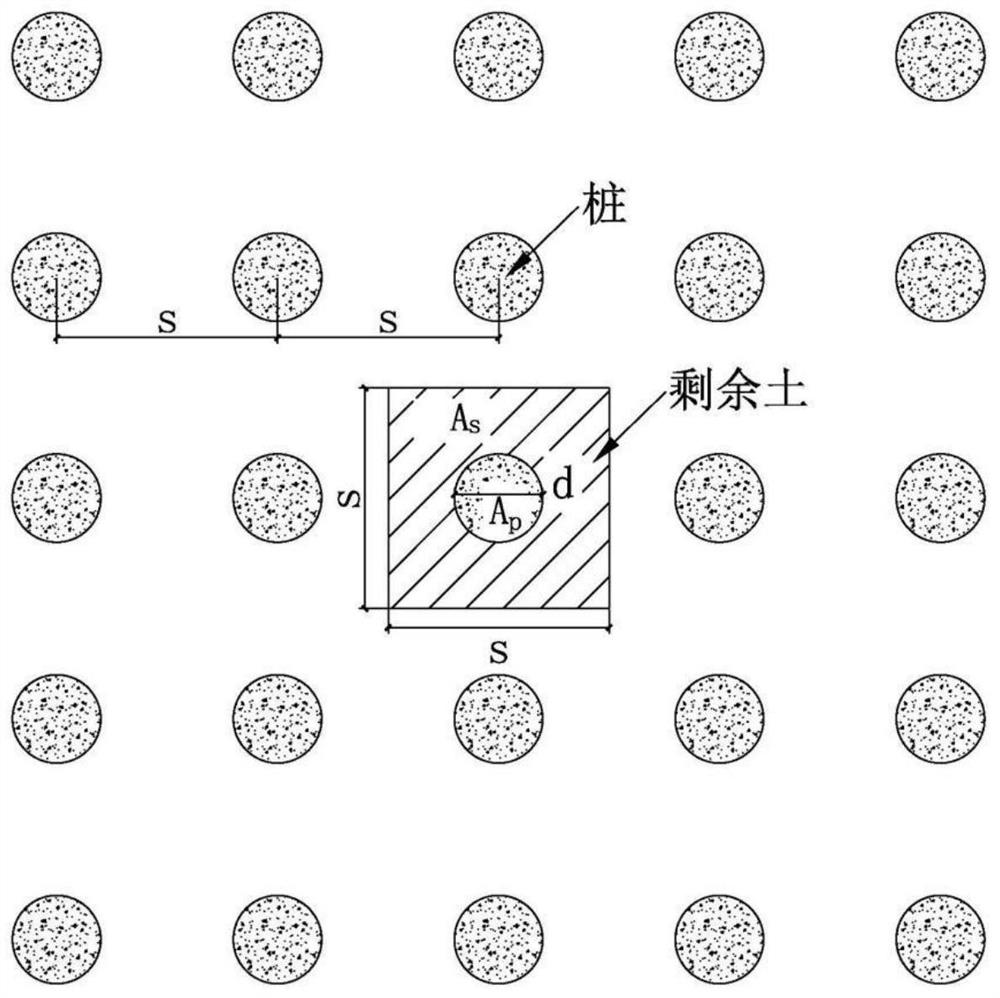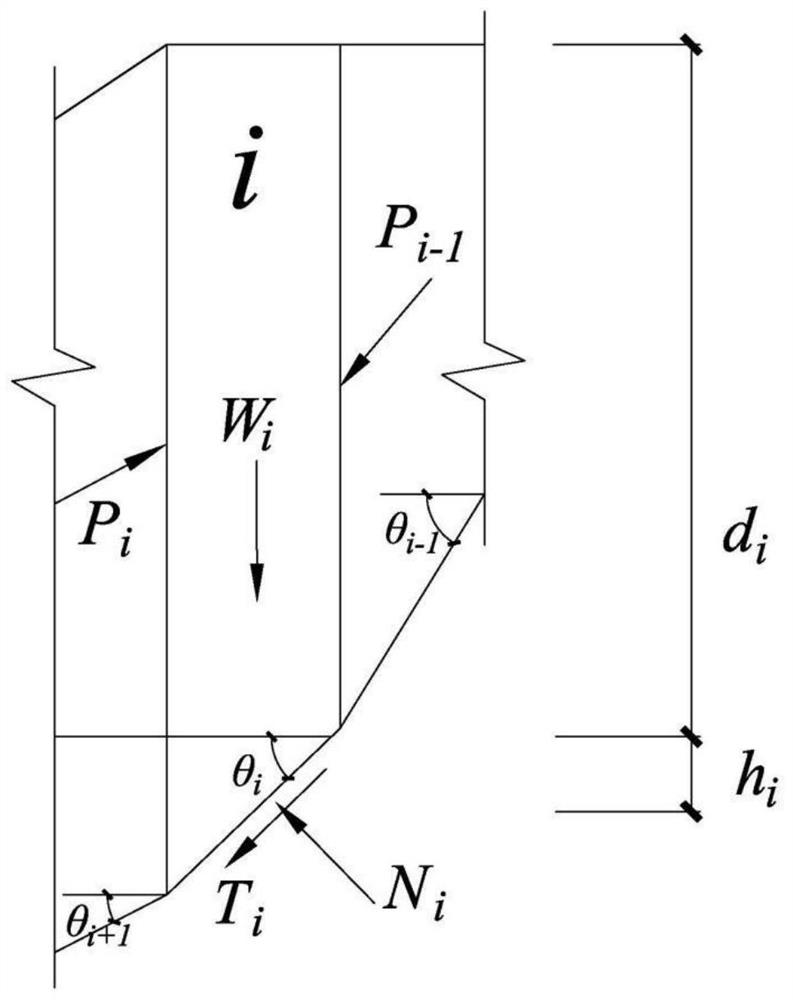Calculation Method of Composite Foundation Fill Slope Stability Coefficient Based on Transfer Coefficient Method
A technology of stability coefficient and composite foundation, applied in the direction of electrical digital data processing, special data processing applications, instruments, etc., can solve problems such as non-compliance, composite foundation filling slope stability coefficient error, etc., and achieve a simple and clear calculation process , The calculation principle is clear and reliable
- Summary
- Abstract
- Description
- Claims
- Application Information
AI Technical Summary
Problems solved by technology
Method used
Image
Examples
Embodiment Construction
[0035] Concrete implementation process of the present invention will be provided below, as figure 1 , figure 2 As shown, for the piles arranged in a square, the pile replacement rate can be obtained from the pile spacing s and the pile diameter d Divide the composite foundation filling slope slide into several blocks, including the block with piles and the block without piles; for the block without piles, the cross-sectional area is A i , the width of the cross-section is consistent with the width of the bar containing piles; the cross-sectional area of the bar containing piles is the area A treated by one pile e =s 2 , where the cross-sectional area of the pile is A p = πd 2 / 4, the remaining soil cross-sectional area is A s =A e -A p , pile replacement rate The acting load on the composite foundation is p i , the stress on the remaining soil is p si , the pile shared stress is p pi , Formula (1) can be obtained from the replacement rate principle.
[0036]...
PUM
 Login to View More
Login to View More Abstract
Description
Claims
Application Information
 Login to View More
Login to View More - R&D
- Intellectual Property
- Life Sciences
- Materials
- Tech Scout
- Unparalleled Data Quality
- Higher Quality Content
- 60% Fewer Hallucinations
Browse by: Latest US Patents, China's latest patents, Technical Efficacy Thesaurus, Application Domain, Technology Topic, Popular Technical Reports.
© 2025 PatSnap. All rights reserved.Legal|Privacy policy|Modern Slavery Act Transparency Statement|Sitemap|About US| Contact US: help@patsnap.com



